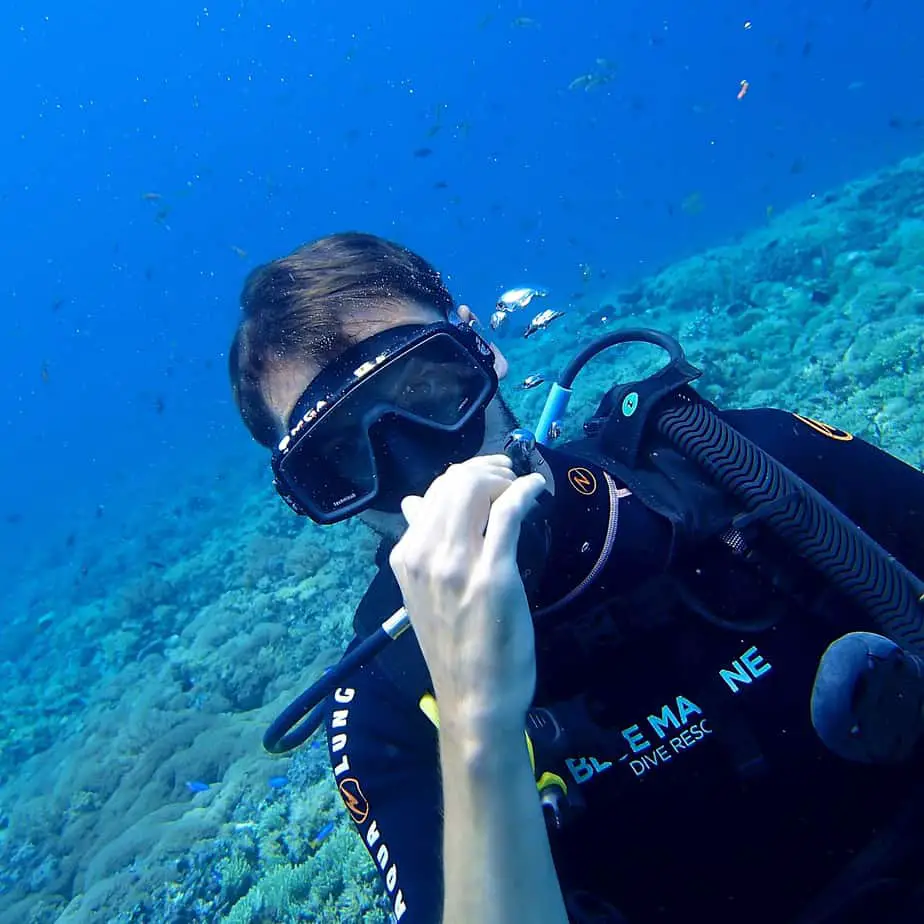Equalization is very important while scuba diving and freediving, and that’s why it’s one of the first skills a diver is taught. Every single dive you make, you must practice equalizing. As you accumulate more dives under your belt, equalization will become second-nature. Unfortunately for some people, equalizing remains difficult no matter what they do.
One equalization problem some divers encounter is when one ear refuses to equalize. This can be frustrating and even painful to experience. Perhaps the tried-and-true Valsalva maneuver is failing you and you need a different method. Not to worry, there are more equalization techniques you can try to make equalizing more consistent.
In this article, we will provide tips for divers who seem to have trouble equalizing one ear. We understand that it’s very frustrating when your dive is halted because one stubborn ear won’t seem to equalize. Let’s take a look at the process of equalization and why you might be encountering this problem.
What’s going on inside our ears?
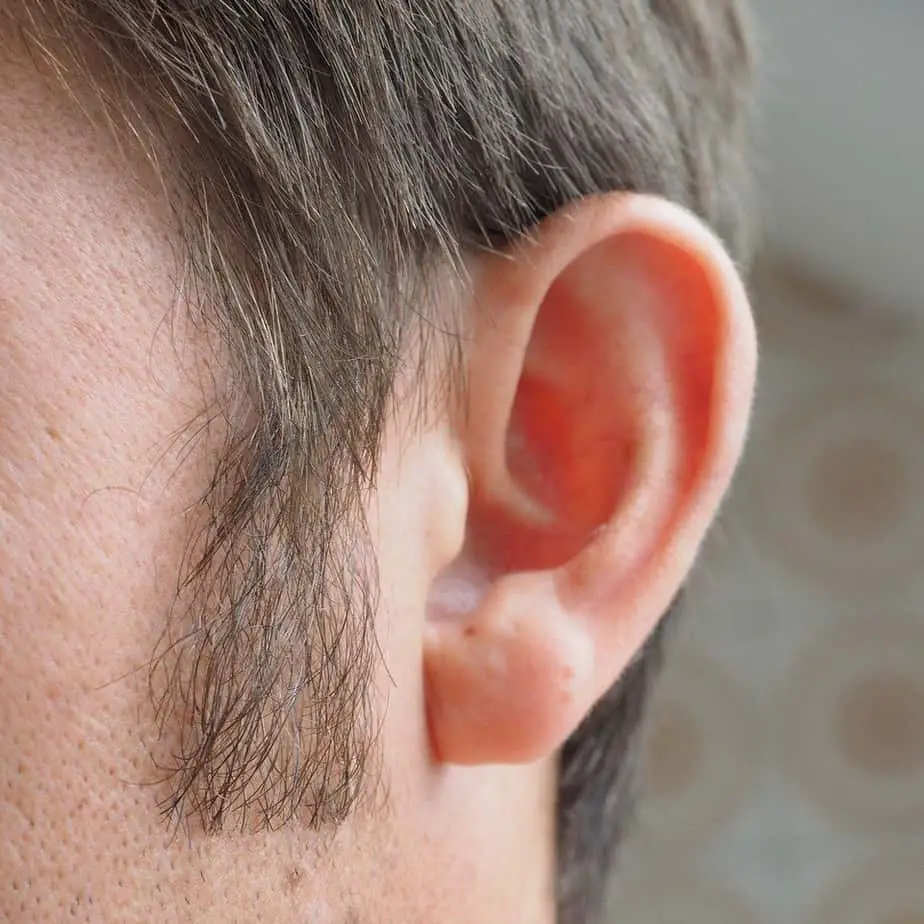
To have a better understanding of the problem, we need to go over some ear anatomy. Don’t worry, we’ll keep it simple.
The human ear can broadly be categorized into 3 major sections: the outer ear, the middle ear, and the inner ear.
- The outer ear is what you expect – the visible portion of our ears and even a little bit of the canal leading into the middle ear. At the surface, it’s normally filled with air. When we go diving, the outer ear canal fills with water but this doesn’t cause any issues. The eardrum lies at the end of the outer ear canal, and it separates the outer ear from the middle ear.
- The middle ear is essentially a dead air space that traps air. When diving, this air space is getting compressed by the pressure and this places the eardrum and inner soft tissues under pressure as well.
- The inner ear is past the middle ear. It is filled with body fluids, and because liquid is almost non-compressible, the inner ear is rarely the cause of any issues when diving; it’s mostly the pesky middle ear that traps air which causes problems.
During our descent, the pressure in the outer ear increases, but the middle ear pressure remains the same. This extreme difference in pressure causes discomfort and can result in middle ear barotrauma, which can damage nerves and blood vessels in the affected ear.
If you suffer a middle ear barotrauma, not only is it extremely painful, but it can also result in an ear infection. You do not want it to get that bad, because it can cause permanent hearing loss. Plus, infections in the head are generally high risk because there is a possibility of it traveling to your brain. So avoid it at all costs!
By equalizing this pressure difference, we can adjust the pressure in the middle ear to match the pressure in the outer ear. During the descent, the middle ear pressure needs to increase. During the ascent, the middle ear pressure needs to decrease. We can re-balance the middle ear pressure with the help of the Eustachian tube which connects the middle ear to the nasopharynx, which is essentially the upper throat and nose area.
What’s going on when we equalize?
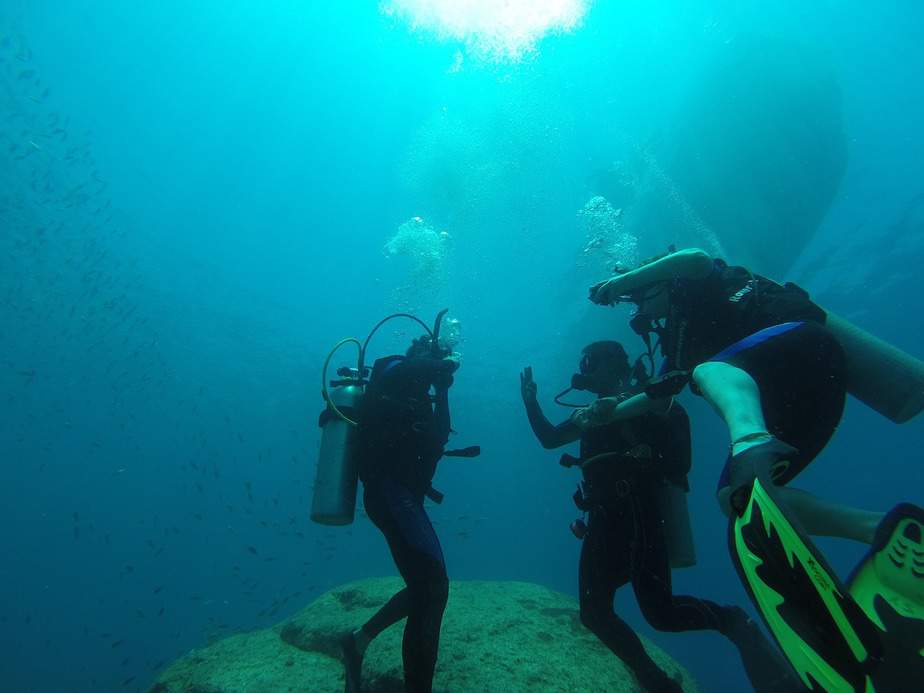
Since the air in our middle ear is at a different pressure than the pressure around us, we need to somehow introduce it to air that is at the ambient pressure so that the pressure is equalized. The air that we breathe from our scuba tanks should already be at the ambient pressure thanks to the regulator.
We need to get this air into the middle ear, and we do that through the Eustachian tube. As we mentioned, this is the link between the middle ear and the throat, where we are receiving air at the ambient pressure. The Eustachian tubes are blocked when descending due to the pressure pushing the sides together and blocking air flow to it, which is why we have this problem to begin with.
Thus, scuba divers need to use some sort of equalization technique to force the Eustachian tubes open and equalize the middle ear. If you have trouble equalizing one ear, it just means that your equalization method seems to only open one of the Eustachian tubes and not the other.
Some divers, for whatever reason, just have a harder time equalizing their ears than others. Even experienced divers can have sensitive ears and struggle to equalize. When one of your ears isn’t equalizing, you may have to try out a different equalization technique that is more consistent in future dives.
Let’s take a look at them now.
Equalization techniques
The Valsalva maneuver (pinch and blow)
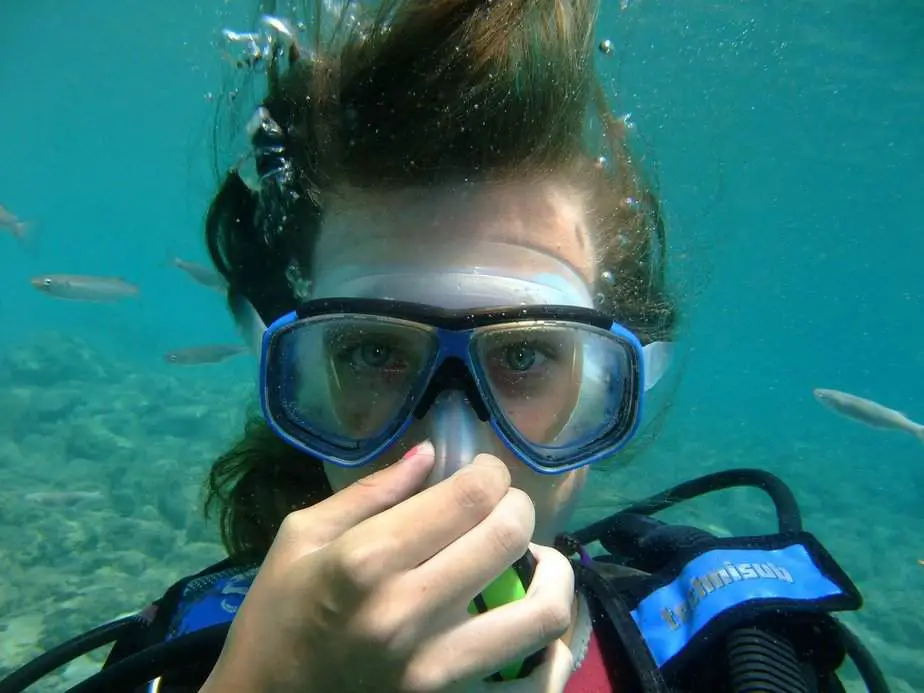
This is the most common way for scuba divers to equalize, and chances are it is the equalization technique that is failing you. We are going to cover it for completeness’ sake.
You probably already know what the Valsalva maneuver is, even if you haven’t heard of the proper name for it. If you’ve ever been on an airplane or up a mountain, it’s likely someone already taught you the Valsalva maneuver. See if this sounds familiar.
First, pinch your nose through the dive mask’s nose pocket and don’t let go yet. Next, try to exhale through your nose. Since the nose is pinched shut, the air will redirect elsewhere and hopefully force open your Eustachian tubes.
This is a beginner technique that is only effective at “shallow” depths (i.e. depths less than 30m/100ft). Past that, it is ineffective because the air in your lungs are too compressed that they are not enough to equalize the sinuses and ears.
However, the reason why this maneuver is so popular is because of how easy it is. Plus, most scuba divers aren’t diving beyond 30m anyways, so they have no need to learn the more advanced techniques. But, if you are struggling to equalize one ear, then perhaps you should use another equalization method.
The Toynbee maneuver
A straightforward alternative to the Valsalva maneuver is the Toynbee maneuver. If the Valsalva is referred to as the “pinch and blow” method, then the Toynbee is the “pinch and swallow” method.
Essentially, you pinch your nose through the mask just like for the Valsalva. Then, simply swallow. If that doesn’t work, an alternative is to pinch your nose and then open your jaw as if you’re doing a great big yawn.
These movements force your jaw and throat muscles to move in such a way that it can open up the Eustachian tubes and equalize your ears.
The benefit of the Toynbee maneuver is that it doesn’t rely on having a lung full of air which you will have a limited amount of at deep depths. Furthermore, it does not require one to contract their lung and diaphragm muscles which can be exhausting and might result in a barotraumatic injury to the ears and lungs.
The Lowry maneuver
Should both the Valsalva and Toynbee maneuver fail you, then you can try the Lowry maneuver. The Lowry technique is a mix of both the Valsalva and Toynbee maneuver.
Essentially, you pinch your nose, and then you try to exhale through your nose and swallow at the same time.
This may seem extremely awkward at first, so you should practice this on land until you are comfortable with it. Rather than to call off the dive, you might as well try it, right? By combining both the aforementioned maneuvers, you may have a higher chance of equalizing both ears.
BTO/VTO Hands free maneuver, Frenzel maneuver, Saline Equalization maneuver
The maneuvers discussed so far have been quite straightforward. However, these maneuvers are much more advanced and require a lengthier explanation which we have already done in this article.
The purpose of this section is to inform you of their existence and for you to look up YouTube videos or read other articles about them if you are not satisfied with our explanation.
How to avoid ear pain when descending
Take your time
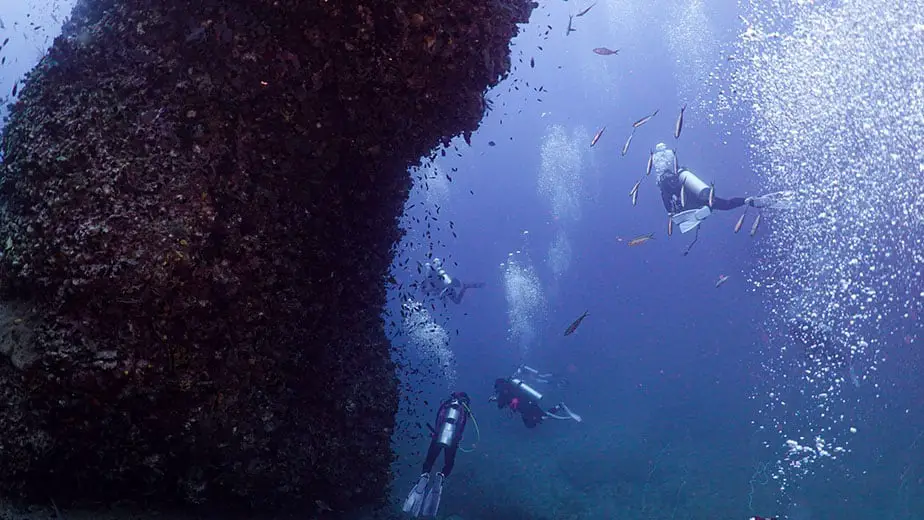
If you are inexperienced or have sensitive ears, then it would be prudent to descend at a speed you are comfortable with. Do not let your buddy, dive guide, or anybody else make you feel like you need to speed up. Middle ear barotrauma is a serious risk that you do not want to experience.
Even just being 1 foot underwater will subject your eardrums to pressure that is 0.445 PSI higher than the pressure at sea level. Descend to a depth of just 4 feet, and the PSI increases to 1.78, which should already be enough to cause some discomfort if you haven’t already begun to equalize the pressure.
Knowing how quickly you can begin to feel discomfort should give you an idea of just how often you should be equalizing. Which brings us to our next point.
Equalize early and often
You’ve likely heard this adage before. Despite how wise it is, it’s also lacking in specifics. The standard advice is that you should equalize once for every 2 feet you descend. If you find that your ears are unusually sensitive, then try equalizing for every foot you descend. Eventually, equalizing will become second nature; just something you do as naturally as breathing.
Experienced scuba divers, particularly those who descend quickly, are continuously equalizing. You need to train yourself to be quick and efficient with your equalization methods. Pick the one that you can do most reliably and practice it until it becomes a habit.
Divers who are not proficient with their buoyancy control may find themselves descending much faster than expected. Some divers simply forget to equalize often; they may descend 4-6 feet without equalizing and find that their middle ear is under serious pressure and pain. To alleviate this, we go to our next point.
Equalize even before you dive
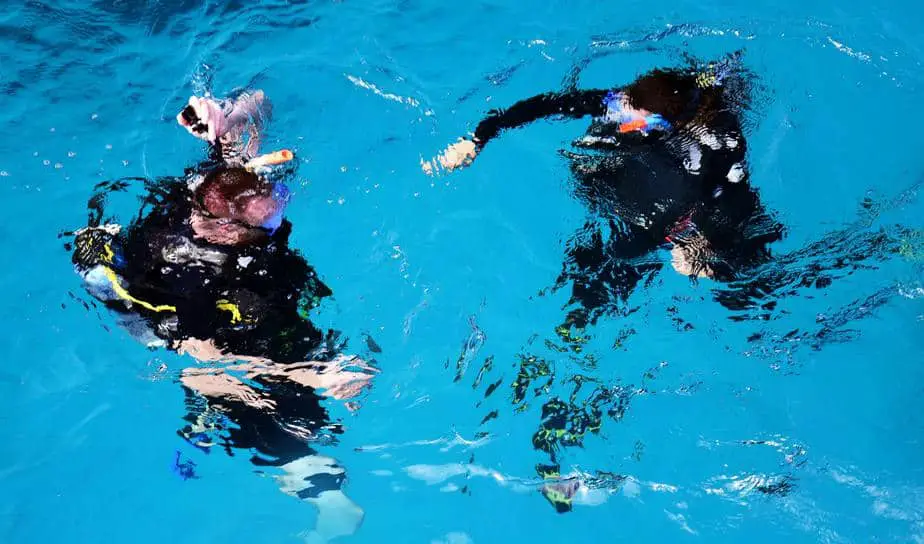
This might sound strange because your ears will already be equalized at the surface. However, what we mean is to get into the habit of equalizing your ears even before you begin to feel pressure in them, hence starting at the surface. You can think of it like a warm-up and it can reduce the chances of a block early on.
If you find going through the motions awkward, then a simple trick is to chew gum between dives. By chewing gum, your mouth will produce excess saliva that you are forced to swallow. This just so happens to be very similar to at least a couple of equalization methods, and can help you build that habit of equalizing all the time.
Look up when equalizing
For most people, the act of looking up will help open up the Eustachian tubes, or at least put them in an advantageous position to open up more easily.
Another trick to open up your Eustachian tubes is to tense your throat and push your jaw forward and down. The muscles used to perform these movements can make it easier to open up the Eustachian tubes up as you perform one of the equalization maneuvers described above.
Stop descending if it hurts
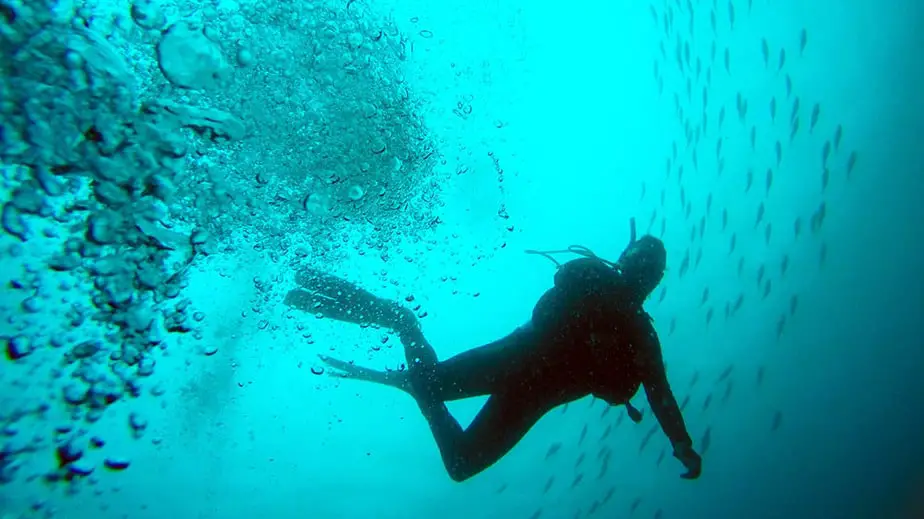
If you have one stubborn ear that just won’t seem to equalize, stop descending immediately. Go up one or two feet and try to equalize at this higher depth.
Remaining at that depth or descending further will cause your Eustachian tubes to be locked in place by the high pressure differential, hence why we recommend ascending a couple of feet to make it easier.
Do not descend until you have successfully equalized both ears. If you are struggling to equalize, then end the dive and go back to the surface. It’s not worth it to risk an ear barotrauma.
Other factors that can prevent equalization
There are some additional problems you might be contending with that can make it difficult to equalize your ears. See if any of the following situations apply to you:
- Having an upper respiratory infection or a cold can result in excessive congestion and make it difficult to equalize your ears. If you’re sick, wait until you’re fully recovered before scuba diving.
- Drinking or consuming dairy products can increase mucus production which can block your airways.
- Dehydration can cause your Eustachian tubes to be more sticky and prone to locking up. You should drink plenty of water before every dive and don’t worry if you need to pee.
- Smoking cigarettes can harm your respiratory organs and make it harder to perform some of the equalization techniques like the Valsalva maneuver.
Parting words
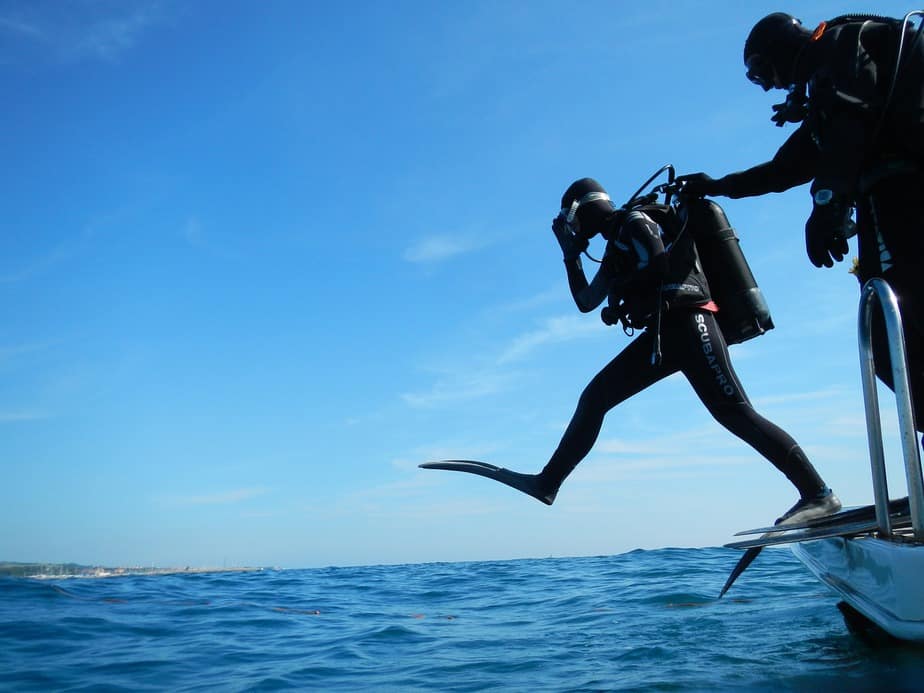
Whether you’re a new diver or an experienced diver, sometimes you can have trouble equalizing your ears. The tips provided in this article can help you equalize your ears properly and ensure that you can continue diving without any stubborn issues.
The general gist is that you should be very comfortable with performing the Valsalva, Toynbee, or Lowry equalization techniques. They are very straightforward and easy to perform rapidly. Get in the habit of doing them frequently while you are descending.
If one equalization technique fails, stop your descent immediately and go up a couple of feet. Either try the technique again or try another equalization method. Go at your own pace. Do not let other divers pressure you to descend at a faster pace than you can equalize your ears without discomfort.
Drink plenty of water, avoid dairy products, don’t dive when you’re sick, and remember to equalize early and often.

